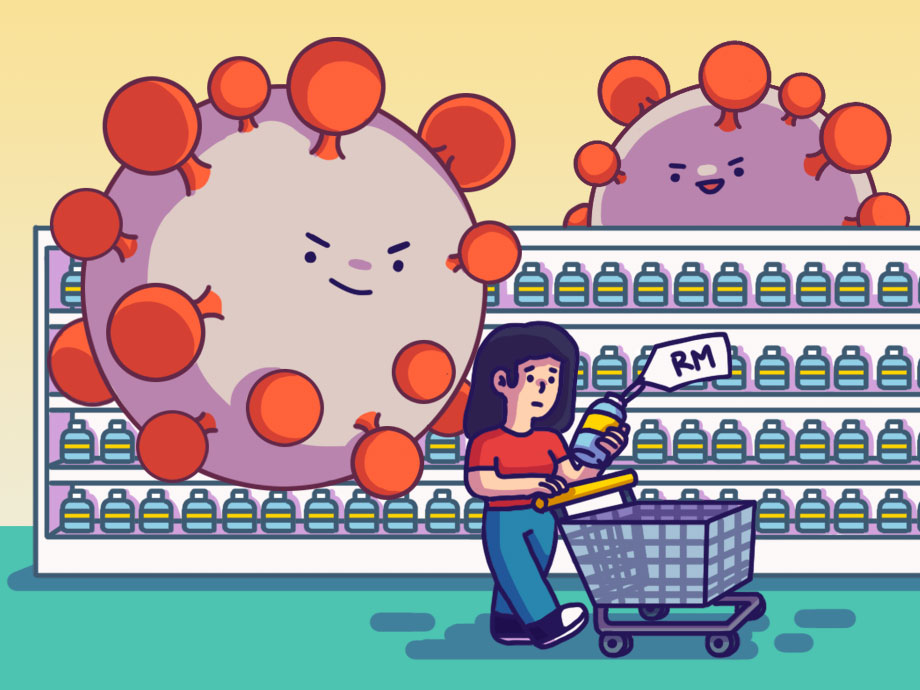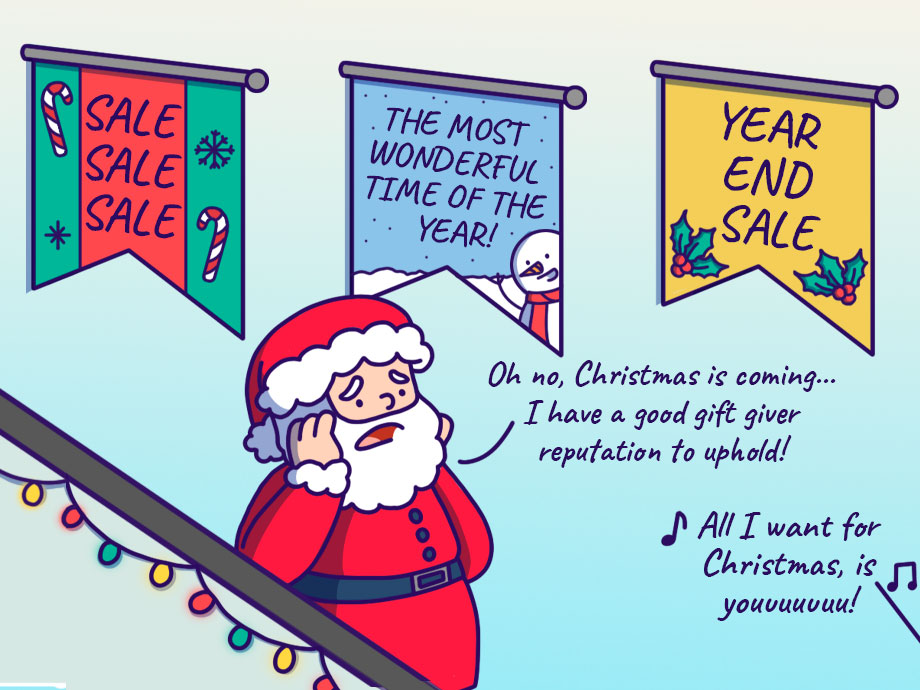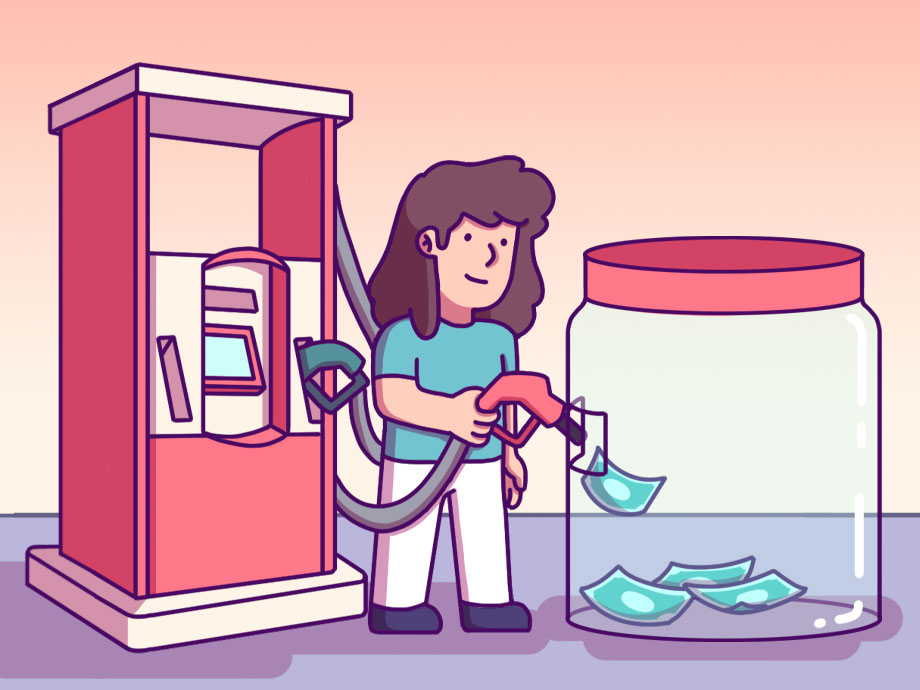Budgeting | Personal Finance | Article
Tame the Impulsive Shopper in You
by The Simple Sum | 17 Jun 2021

This article isn’t going to tell you how to shop mindfully.
There’s already plenty of great advice out there (if you’ve never seen it, Google’s your friend), so we’ll do things a little differently this time.
Instead of giving you tips like ‘make a mindful shopping list’, we’re going to look at concepts on the human psyche, consumer behavior and marketing practices.
How brands use psychological tactics and disciplines such as ‘neuromarketing’ that take advantage of our blind spots to enhance their bottom lines.
You’ll find some tips here and there, but ultimately this is a list of things to bear in mind so you can approach online shopping as a better-informed consumer.
Anticipation and Digital Dopamine
Let’s imagine for a blissful second you’re the newly-minted owner of a new Malaysia Uniqlo outlet. You’re going to make it the best retail experience the country has ever seen. Collaborations with local designers, in-store catwalks, steep discounts. You’ve checked all the boxes.
Or have you?
A study has shown that dopamine, the chemical messenger in our brains that reinforces pleasurable sensations, is released when you’re anticipating a reward – much more than when you’re receiving it.A survey conducted on shoppers from the US, UK, Brazil, and China in 2014 found more than two-thirds of the shoppers were “more excited when their online purchases arrive in the mail than when they buy things in store”.
Which is why for big retailers, the online experience is just as important – if not more – than the traditional brick-and-mortar spectacle. It’s the act of waiting, and herein lies the anticipating, that can make online shopping more exciting than shopping in-store.
Online shopping is addictive because it’s designed to be, much like our smartphones and favorite social media networks. Countless amounts of money have gone into R&D to increase our reliance on these products and platforms, and their success depends on us returning.
The 4 Types of Impulse Buys
For many online retailers, impulse buys make up a considerable amount of sales. We make shopping lists and vows to stick to the budget, but we still succumb to unplanned spending.
Let’s take a look at the four types of impulse purchases and some of the triggers that are put in place to oil the wheels:
1. Pure impulse: an unplanned ‘novelty’ purchase, like buying a pair of cheap hoop earrings “because they look cute” while casually browsing a fashion store.
2. Reminder impulse: seeing a product and remembering that you need it, like buying shaving cream at checkout to go with the razor you’re buying.
3. Suggestive impulse: seeing a product and visualising a need for it, like buying a $50 mascara after seeing it listed in the ‘recommended’ section.
4. Planned impulse: taking up a promotional offer with an unplanned purchase, like adding an item to your basket to reach the total needed for free shipping.

Successful ecommerce websites are designed in such a way that products, promotions, and complementary product-pairings are well within the line of sight as you browse, increasing the likelihood of you adding it to your cart.
For those of us who consider shopping a pastime, online retailers target our demographic by using ‘upbeat’ and ‘action-oriented’ copy to appear more engaging. You’ll notice clothing or fashion-centric sites using phrases like “Complete Your Look”, which imply your purchase wouldn’t be complete without the complementary product on offer.
Spontaneous as they may be, but impulse purchases are assisted by a great deal of behind-the-scenes engineering.
The Sweet Science of Savouring
It’s always more painful to pay with cash as opposed to paying via cashless means, whether it’s online payments or via credit card. There’s something about holding something physical money in our hands that makes us feel more connected to it.
Imagine stepping into a home goods store. A plush sofa has caught our attention and our five senses begin to kick in. How does it feel when you touch it? How does it look? What does it smell like?
If it feels, looks and smells good, we feel a sense of euphoria, and we feel compelled to buy it, whether or not we need it or it’s within our budget.
Try observing the sensations your body feels when it gets swept up in these euphoric moments, and you’ll notice they’re just that – sensations.
At risk of sounding like a mindfulness guru, exercises that involve paying attention to sensations and not acting on them have been proven to work, such as the one where smelling food can satisfy hunger cravings.
TL;DR – shop physically as much as you can, and online only when you need to.
The Frequency Illusion – Is It Really An Illusion?
One of the objectives of neuromarketing is to find out whether you would pay attention to an ad. Are you responding emotionally when your attention shifts to an ad while you’re scrolling through Instagram Stories?
The answer to this may indicate your buying intent. It will help the marketing machine determine the next step to take – whether it’s to push another ad in a different form, send you a more compelling newsletter, or a highly-targeted promo tailored to your customer journey in the sales funnel – nudging you closer to clicking “Buy”.

But how does all this tie in to confirmation bias?
If you’ve ever felt an ad following you, showing up on your favourite news website first and then on Instagram a few days later, it’s because it is.
‘Ad retargeting’ is a common marketing tactic where companies ‘retarget’ users who have already seen their products on a website, but haven’t made the purchase. These companies will show the user the same products again and again, pushing ads that trail them as they flit between news websites, social media and YouTube.
For most of us this is downright annoying, like a fly that keeps buzzing around your head when you’re trying to enjoy dinner. For brands on the other hand, ‘remarketing’ is a godsend, and they do this for one reason – behavioural reinforcement. The belief is that if you’re exposed to the same product again and again, you might just give in and buy it.
This leads us to the Baader-Meinhof Phenomenon, also known as the frequency illusion, where you see something once and all of a sudden it’s everywhere.
See where this is going?
It may seem paradoxical, but it’s just another example that illustrates how psychology and marketing go hand-in-hand to make online shopping much, much more irresistible than we’d want it to be.
















